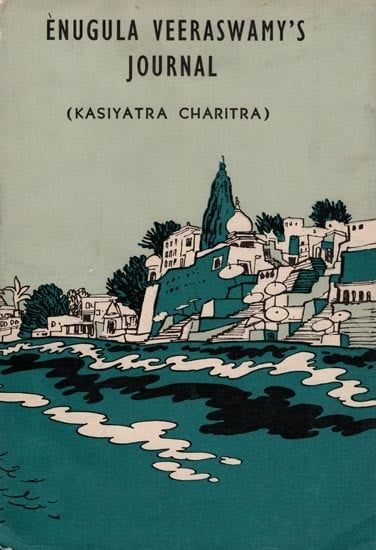
| Specifications |
| Publisher: Andhra Pradesh Government Oriental Manuscripts Library And Research Institute, Hyderabad | |
| Author Komaleswarapuram Srinivasa Pillai | |
| Language: English | |
| Pages: 296 (With B/W Illustrations) | |
| Cover: PAPERBACK | |
| 9.5x6.5 inch | |
| Weight 480 gm | |
| HBF679 |
| Delivery and Return Policies |
| Ships in 1-3 days | |
| Returns and Exchanges accepted within 7 days | |
| Free Delivery |
The way of life through generations-great grand parents, grand parents, parents, children, grand children and great grand children-through the stream of life, incidents and happenings in villages, towns, states and countries is considered as history. During a certain period, a particular region might have been considered as backward or under-developed. The same region might have become well-developed with skyscrapers, beautiful groves and other symbols of prosperity during a different period. This is generally known as culture. Dispassionate description of the well defined bounds of human activity, their aims, and their meteoric rise and fall is considered to be the cultural history, Eating habits, attire, way of living and customs, the way they exchange their ideas by speech, good and bad, the medicines they take, the utensils and furniture they use, their living quarters, their neighbours, the weapons like dagger or knife they use many a thing they use on many an occasion all these things are living symbols of human culture.
In this gigantic universe, it is not an easily comprehensible thing to everybody to know the actual circumstances prevailing and the culture of the people living in any country, state or even a particular region. Unless a person, prepared to bear the hazards and high expenses that are involved, undertakes a purposeful tour knowing minutest details of anything small or great in their different facets, the history of culture cannot be written. Diaries of travelogue and works of history with anecdotes thereon are the basic material that go into the making of a cultural history. The present work "Enugula Veeraswamy's Journal" belongs to that category of useful books. This is actually not a diary. The title given to this book in its Telugu manuscript copy was "Narrative of Enugula Veeraswamayya's Pilgrimage to Kasi." In the original manuscript it was given as "This is the narration got composed by Enugula Veeraswamayya." Since it was mentioned as got composed, it is clear that it was not prepared by Veeraswamy himself, but it was got prepared by others.
Sri Komaleswarapuram Srinivasa Pillai, a friend of Sri Veeraswamy was the compiler of this work in Telugu. Before Sri Veeraswamy was setting out on pilgrimage Srinivasa Pillai met him and requested him to write regularly about the places he visited, the important events that took place and such other things. Accordingly, Sri Veeraswamy used to write regularly detailed letters. Sri Pillai compiled all these letters in a beautiful book form arranging them chronologically, eliminating usual matters pertaining to welfare and other personal things. It was to this work that the title "Narrative of Pilgrimage to Kasi got composed by Enugula Veeraswamy" was given. Nevertheless it was not Sri Veeraswamy who prepared this work but it was his friend Srinivasa Pillai.
Fully conscious of the immeasurable treasure that lies embedded in Sanskrit, Telugu, Persian and other Indian languages and realising the need to acquire, preserve and make it easily accessible to all those interested in it, the Government of Andhra Pradesh established the Oriental Manuscripts Library and Research Institute as part of the Directorate of State Archives. Judicious collection and scientific preservation of valuable ancient manuscripts in all the languages so that what is contained therein is not lost to humanity is very essential. Equally essential is it to see that the treasure does not lie hidden always but is made available for everyone to share its richness and beauty. This triple task of collection, preservation and publication is entrusted to the Oriental Manuscripts Library and Research Institute and one can derive a certain sense of satisfaction from the achievements of this Institute so far. I would like to refer to the scholarly contribution made in this direction by the Joint Director Dr. Vadlamudi Gopalakrishnaiah. His erudition and capacity to appreciate the importance and value of the manuscripts available in this Institute are reflected in the publications so far brought out.
Within a short time that the Institution has been in existence, very useful publications have come out. Some of them are Seethakalyanam (Yakshagana Nataka), Sringara Padamulu (Songs and Classical Poems), Indumati Parinayam (Old Poetry) all in Telugu, Radha Vamshidhar Vilasa Natak an ancient Yakshagana Natak in Hindi and Sri Gita Govindam- Gita Sankaram two Sanskrit musical works with notation.
Shortly, a few more books are to be published which include a book revealing some historical facts in the two copper plates inscriptions, viz., Sri Virupaksha' and 'Srirama', another rare work in Sanskrit origin of Telugu words of grammar Vaikrita Chandrika by Manchella Vasudeva Kavi and a Purana in Telugu Old Poetry Nardeeya Puranamu'.
This book for which I have been asked to write a foreword is an English translation of the Telugu original Kasiyatra Charitra compiled by a friend to whom Sri Enugula Veeraswamy had written letters from time to time after Sri Veeraswamy started on pilgrimage in 1830 to Kasi. The letters highlight the cultural, historical, social and economic aspects of life in the regions travelled by the writer. The tour was undertaken at a time when modern modes of transport were absent. It was thus a leisurely progress of a pilgrim and reflects his views on what he observed. Starting from Madras on palanquin he went to Tirupati, Cuddapah, Srisailam, Hyderabad, Nirmal and Nagpur. From there he proceeded to Kasi via Jabalpur, Reema, Mirzapur, and Allahabad. The return journey was performed rie East Coast touching apart from Patna, Gaya, Menghitun vi Mahal, Krishnaghar Coat touching apart from other places like Srikakulam, Rajahmundry, Masulipatnam, Nellore and Tiruvallur.
The travelogue of Sri Enugula Veeraswamy is a treasure-house of information compiled by Sri Enugula Verdowed with a keen power of observation and understanding who was endance of piety being combined with a capacity to catalogue authentic information. Posterity is deeply indebted to this pilgrim.
It is interesting to note that although it was written originally in Telugu it was first published thranlthough Veeraswamy himself desired to bring out an English translation and had few chapters translated. But unfortunately the work was not completed. The translation is also not available. Thanks however to the enthusiasm and keen interest and a sense of dedication on the part of a former Director of State Archives Sri P. Sitapati, L.A.S. We have the entire work translated into English. Sri Sitapati and Sri Purushottam, deserve all praise for the competency and authenticity of translation, and also for the flowing style which makes the work a highly readable one. The scholarly preface written by Dr. Vadlamudi Gopalakrishnaiah is a valuable addition to the book and brings out vividly the salient aspects of our ancient culture and heritage.
I have every confidence that, have been brought out and what will be brought out by this Institute will find good response from a discerning public. In this task of publication, I wish all those associated with it all good wishes.
No apologies are needed for the translation of a book of such absorbing historical interest and eminence, such as the Kasiyatra Charitra of Sri Yenugulat Veeraswamy. Literary evidence in support of the study of history of India is conspicuous in India by its rarity and Sri Veeraswamy's Journal recording his tour impressions of India in the years 1830 and 1831 is a book of great historical and literary value, which is now being presented to the world of scholars. This is the first travelogue from the land of the Telugus and the author Sri Veeraswamy has done a service to the Indian community by recording his impressions on an all-India tour covering a period which is important in the history of India. Sri Veeraswamy started at Madras on the 18th day of May, 1830 on a long tour of this country. During this historic journey by palanquin, he covered a considerable part of the country staying at places such as Tirupati, Cuddapah, Ahobalam, Hyderabad, Vemulavada, Nirmal, Dhanora, Nagpur, Ramatenki, Jabbalpur, Reema, Mirjapur, Prayag, Kasi, Patna, Gaya, Monghyr, Rajmahal, Krishnanagar, Calcutta, Gopalpur, Cuttack, Puri Jagannath, Chilka Lake, Ganjam, Chatrapur, Berhampur, Srikakulam, Vizianagram, Simhachalam Rajahmundry, Ryali, Machilipatnam, Bapatla, Chinna Ganjam, Nellore, Gudur, Naidupet, Sullurpet, Ponneri and returned to Madras on the 3rd of September 1831. Hundreds of other historically important places were also visited by him in this pilgrimage to Kasi, Prayag etc. During this journey he maintained a journal. This journal maintained in Telugu is a veritable mine of information on the social, political and economic conditions of the first half of the 19th century. Sri Veeraswamy's journal is particularly valuable to us as it throws much light on the conditions of the country during the period indicated above. He is a keen observer and his observations on Hindu holy places, rivers, on religions such as Hinduism, Islam, Christianity, Hindu mythology, astronomy, the customs, manners, castes, laws of the late Governments of the several places make a very interesting and absorbing study. The journal of Veeraswamy is therefore an important literary source for the study of the conditions of India in the years 1830-31, specifically and the first half of the nineteenth century.
Sri Yenugula Veeraswamy alias Yenugula Veeraswamiah, a Niyogi Brahmin of Madras, son of Yenugula Samayya Mantri of Srivatsa Gotra is said to have retired from the service of the East India Company in the year 1835; it is therefore presumed that his date of birth may be round about 1780 A. D. He lost his father at the early age of nine years and was thereafter brought up by his mother. He started life in a poor way; Veeraswamy however exhibited unusual precociousness for his age and was proficient in English even before he was 12 years old. He was a scholar in Telugu, Tamil and Sanskrit also. He joined the then Board of Trade under the East India Company as a volunteer at the early age of twelve, and secured soon an appointment to the post of Interpreter and Translator to the Collector of Tirunelveli. He is said to have come to Madras in his 15th year as a Bokki Phakeer' and then quickly rose to the then enviable position of head-interpreter in the Supreme Court of Madras. It is said that his services were very much appreciated by the European bosses of the Company and he was presented a snuff box made of gold by the Board of Trade in recognition of his versatility and loyal services. He was a quiet unassuming scholar and a philanthropist. He was a friend of the renowned Telugu lexicographer, C. P. Brown. A testimonial given by the then Chief Justice of the Supreme Court of Madras bears out that Veeraswamy possessed exemplary character and served his masters with an untiring loyalty and devotion which brought him fame and riches; he is said to have translated several books like "Smruthichandrika" etc.
Veeraswamy's journal itself stands in eloquent testimony of the greatness of this son of Andhra Pradesh. His views on religion, caste, untouchability etc., show his liberal mind and an attitude which is highly progressive and far ahead of the times in which he lived. The journal shows that he performed several rituals enjoined on all orthodox Hindus visiting holy places; however his observations and reflections, show an active questioning and thinking mind which could appreciate the real greatness of a universally appealing religion such as Hinduism, while at the same time being conscious of the practices and superstitions which had crept into it, and its insistence on Varnashrama Dharma. His hypothesis on the first migration of Dravidian Brahmins to the South, his observations on Pancha Goudas and Pancha Dravidas, the rigid attitudes of South Indian Brahmins vis-a-vis the other Varnas based on historical considerations etc., particularly deserve notice. The observations he has made on the Native States of India, their rulers, their diwans etc., would supplement any scientific study of the social, cultural and historical conditions of these States in the 19th century. An analytical study of the journal from this point of view is being made in the second volume of this journal which is under issue separately.
**Contents and Sample Pages**
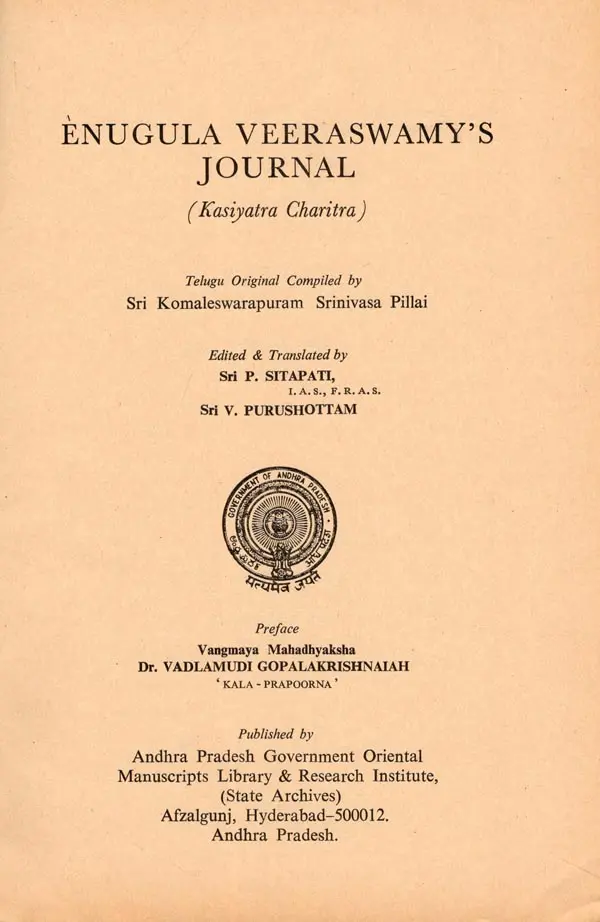
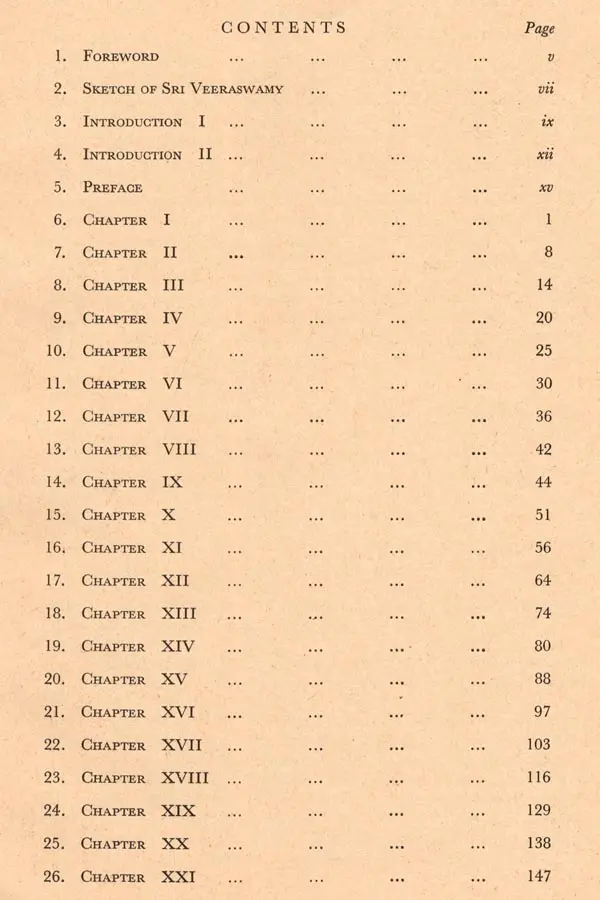
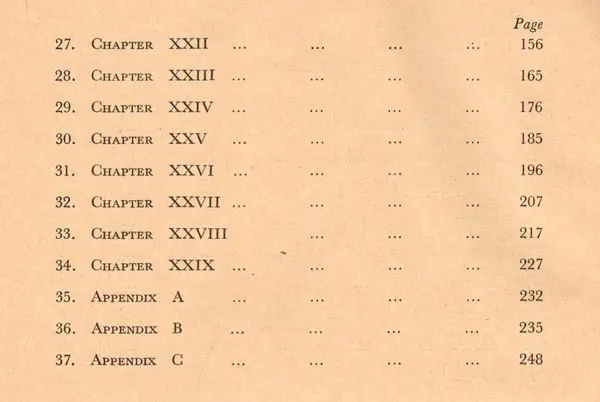
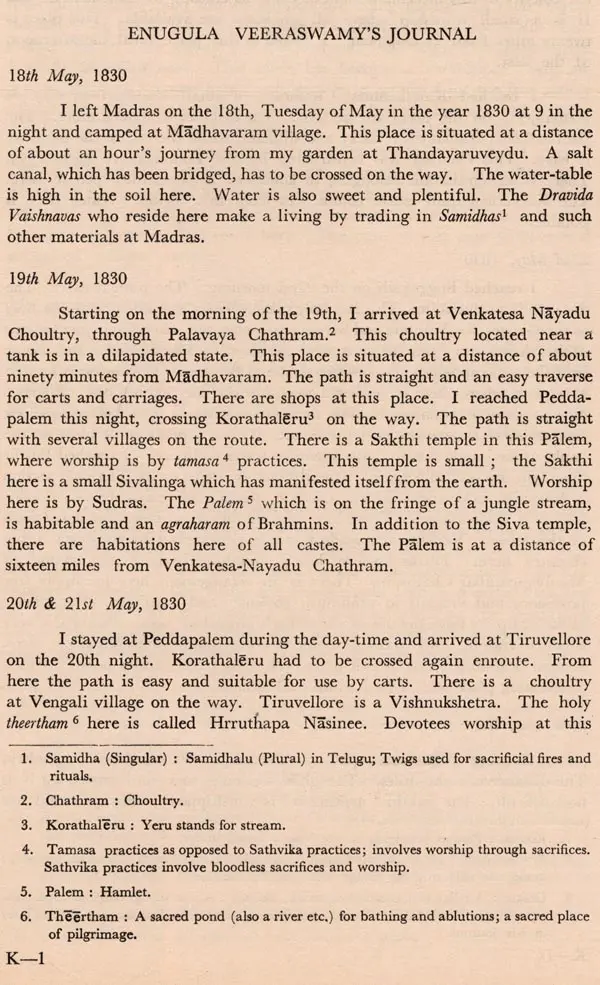

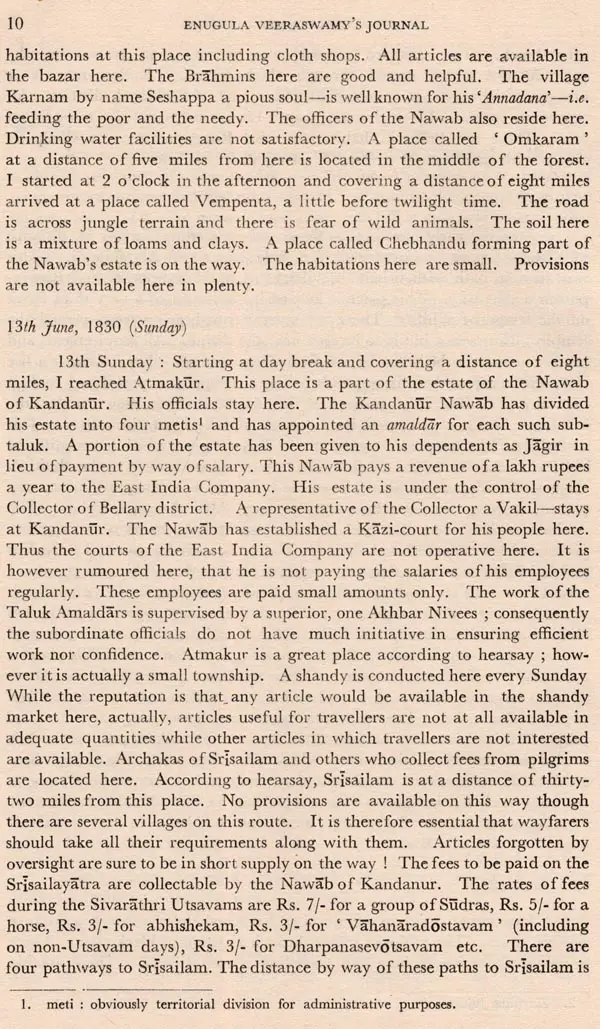
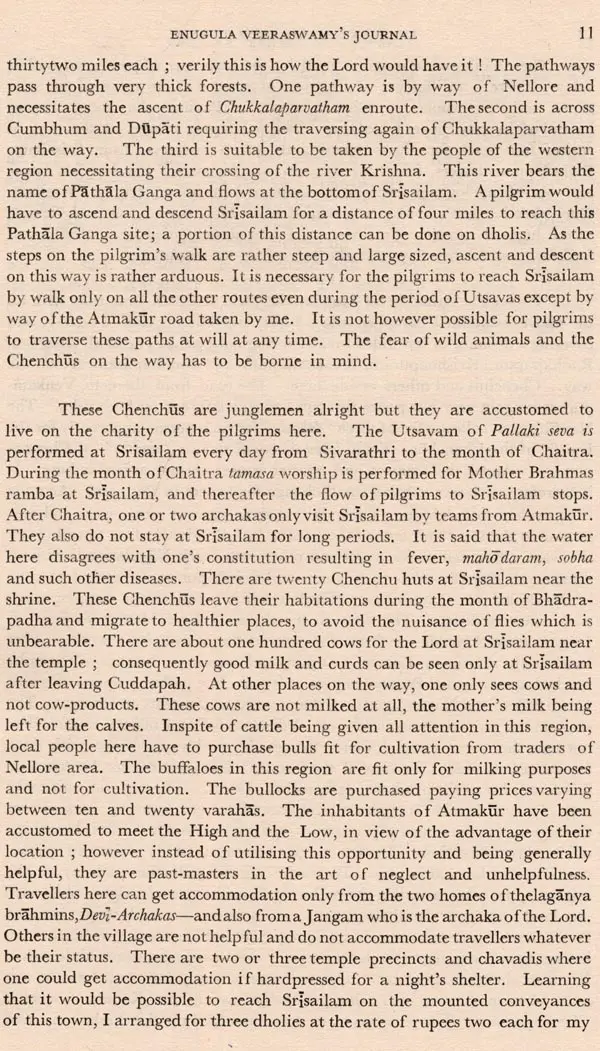
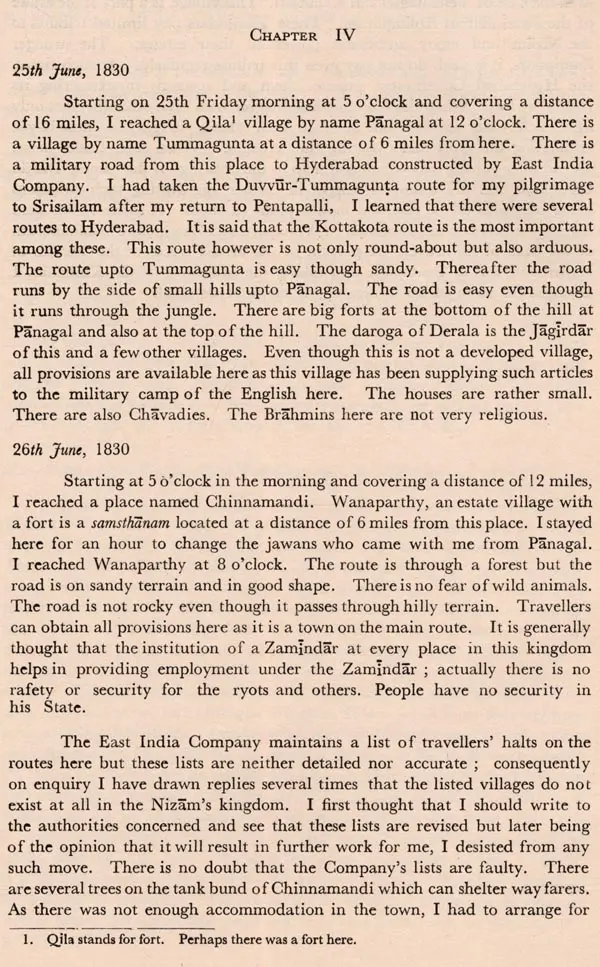

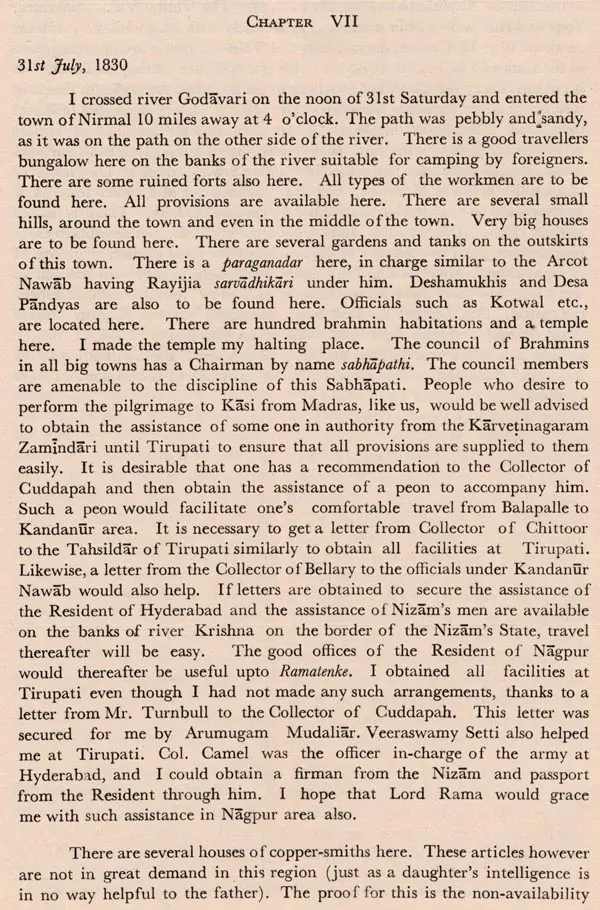
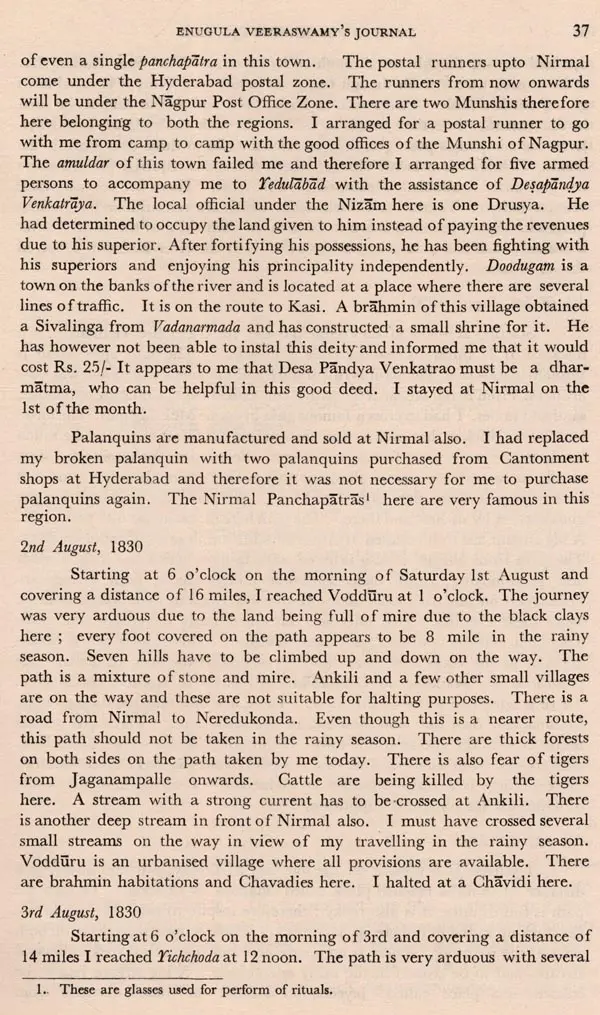
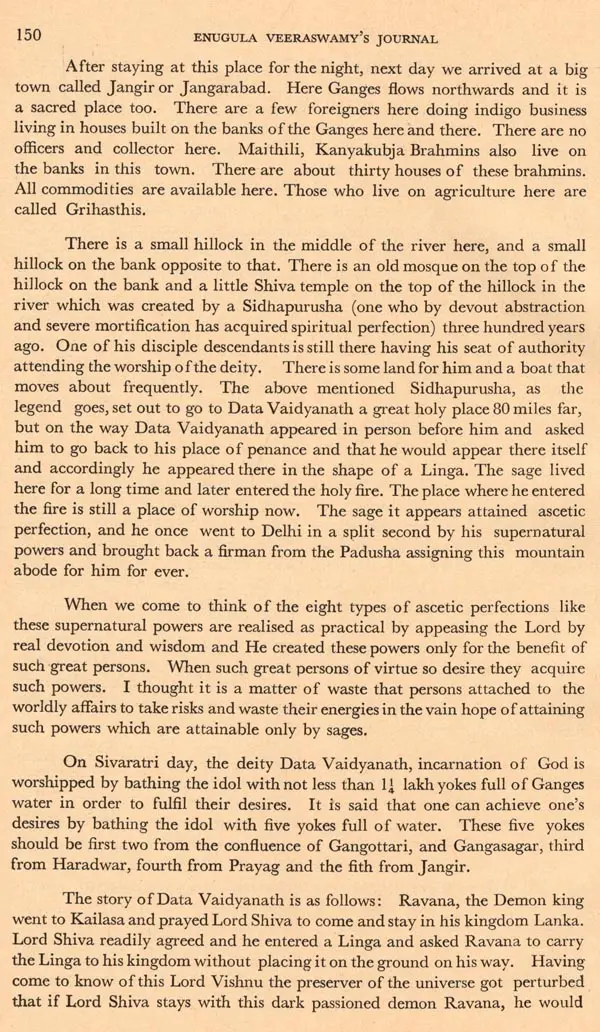
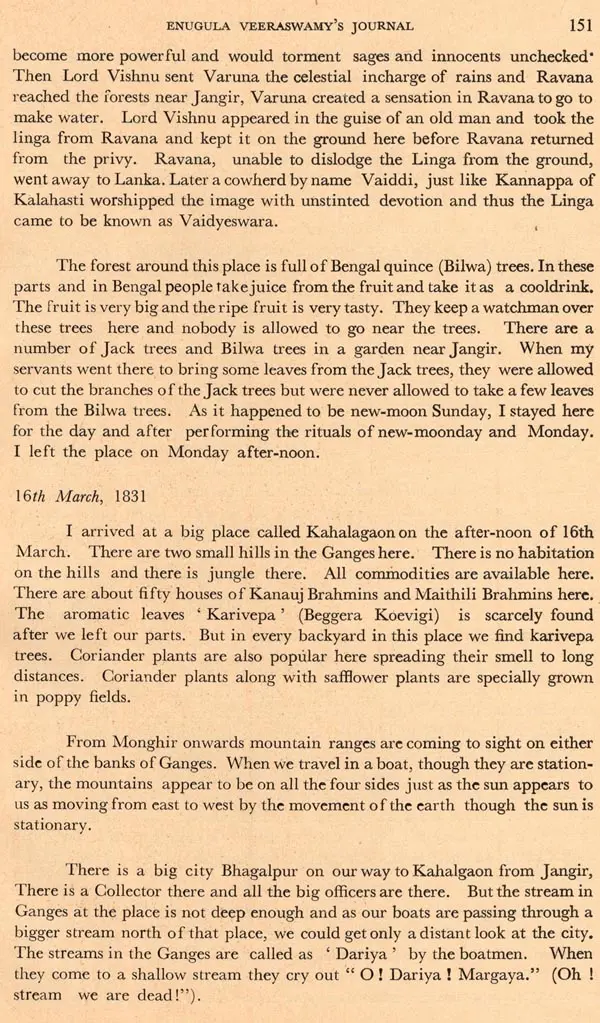
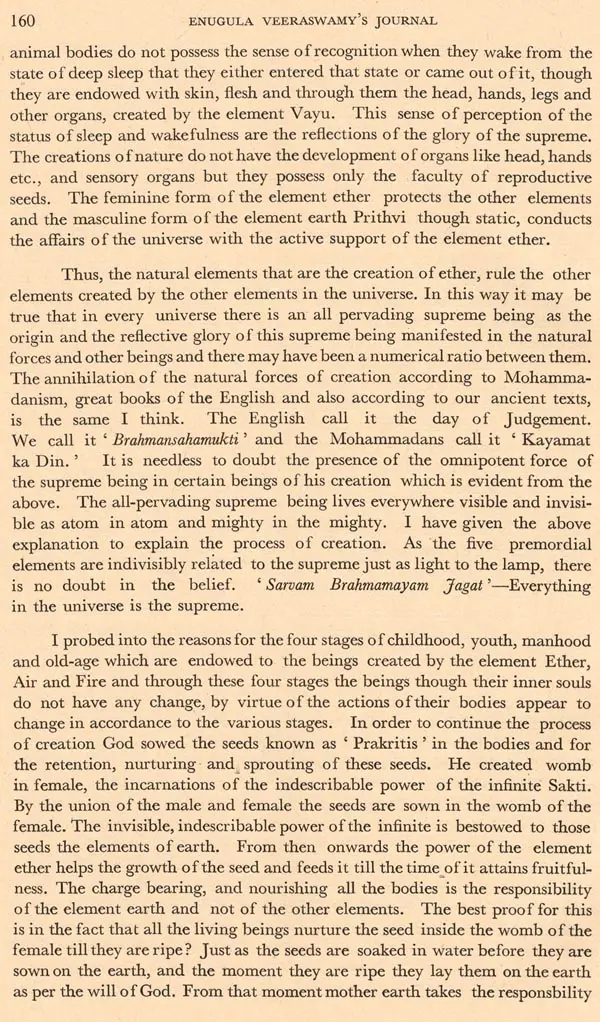
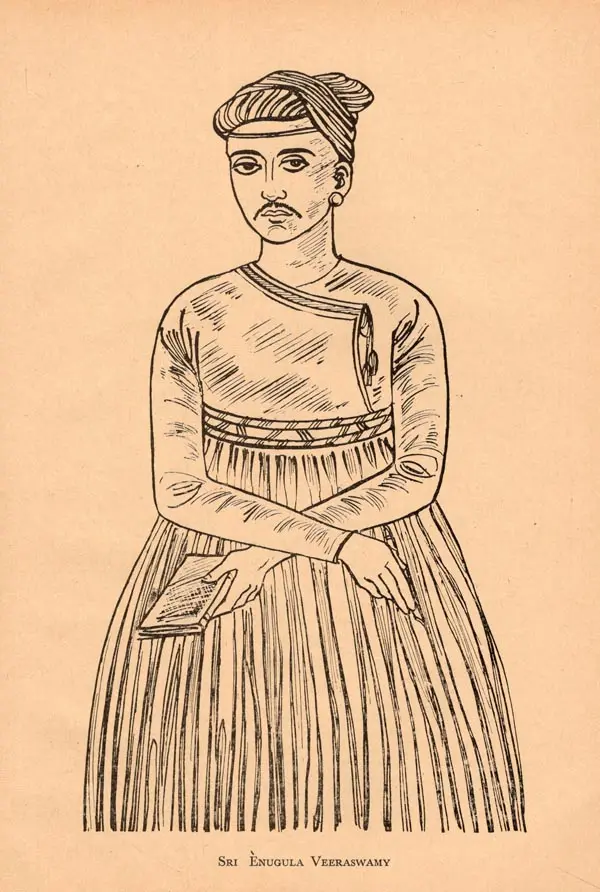
Send as free online greeting card
